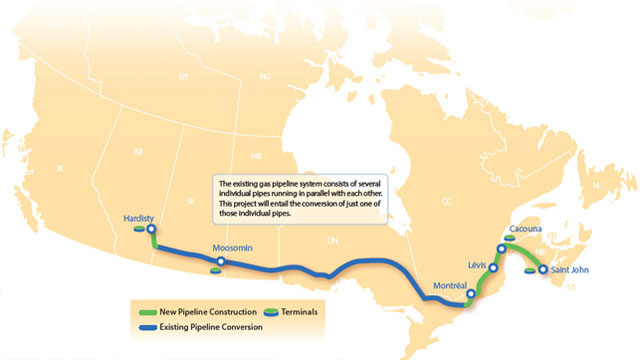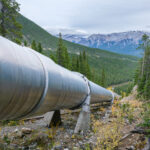Justin Trudeau, the newly elected Prime Minister of Canada, has been in office for less than two weeks but is already making waves in the nation’s energy industry.
In a mandate letter to the Minister of Transport, Trudeau outlined the first steps of his policy and called for a “renewed, nation-to-nation relationship with Indigenous Peoples, based on recognition of rights, respect, cooperation and partnership.” That includes a further collaboration with Canada’s energy policy, which oversees a sprawling network of pipelines and associated infrastructure to deliver the country’s chief export product to market.

As evidenced by a recent pipeline conundrum, those infrastructure buildouts are not completed with a high degree of understanding between the industry and the community.
There is certainly a chance for outright opposition (as is the case with the Keystone XL, which Trudeau approves), but Canada’s 43-year old Prime Minister expects the Minister of Transport to align the country’s strategic goals in a safe, responsible manner. “As Minister of Transport, your overarching goal is to ensure that Canada’s transportation system supports our ambitious economic growth and job creation agenda,” said the release.
Northern Gateway Shelved?
Trudeau outlined seven bullet points, with all focusing on either improved safety or reinforced infrastructure. The most aggressive point, at face value, was the last one:
Formalize a moratorium on crude oil tanker traffic on British Columbia’s North Coast, working in collaboration with the Minister of Fisheries, Oceans and the Canadian Coast Guard, the Minister of Natural Resources and the Minister of Environment and Climate Change to develop an approach.
That puts Enbridge’s (ticker: ENB) Northern Gateway project in hot water. The Northern Gateway pipeline would provide 525 MBOPD to an export terminal in Kitimat, British Columbia, increasing outlet options for the country’s oil sands production. The $6.1 billion project was first approved in June 2014, but construction had yet to begin. Trudeau opposed Northern Gateway from the start, saying in September that “Anyone who has been to the Great Bear rainforest knows that that’s not a place for a crude oil pipeline,” referring to the sensitive ecological areas along the northern B.C. coast.

Sounds Like a Page from the U.S. Government’s Keystone XL Playbook
Enbridge responded by taking Trudeau’s First Nations pledge into account, saying 26 of the 45 indigenous groups have approved the project and will describe their realized benefits of the pipeline to the government. Enbridge added that the Northern Gateway endured “one of the most exhaustive reviews of its kind in Canadian history,” including a four-year review process which determined 209 separate conditions.
Considering the pipeline has yet to break ground and does not have a guaranteed shipping option in place, green advocates are proclaiming a victory.
What about the other Pipeline Projects?
Despite a perceived death blow to the Northern Gateway, Trudeau is supportive of other infrastructure expansion projects. But he also wants more oversight.
Michal Moore, professor of energy economics at the University of Calgary’s School of Public Policy, told the Financial Post that Trudeau’s approach can more closely align the energy industry with the overall community. Stephen Harper, former PM and predecessor of Trudeau, was criticized by some political figures for being too aggressive and hard-headed in his handling of the Keystone pipeline expansion. The former Quebec environment minister described Harper’s process as “flawed” and cast doubt about the legitimacy and transparency of his project approvals.
Trudeau aims to ease the process and acknowledges the need for pipelines as opposed to transportation by rail. In addition to the Keystone XL, the Prime Minister has voiced his support for TransCanada’s Energy East pipeline, along with the TransMountain project spearheaded by Kinder Morgan. The Energy East has a projected in-service date of 2020 and will move 1,100 MBOPD to the Atlantic Coast. The TransMountain pipeline intends to almost triple its capacity to 890 MBOPD, and is currently the only pipeline connecting Alberta crude to the Pacific Coast.
Rough Waters Upstream
Although Trudeau has backed selective midstream projects, his stance on upstream development seems more aggressive. The Prime Minister plans to end fossil fuel subsidies and invest in clean energy technology. Following the election, the Canadian Association of Petroleum Producers voiced concern regarding new cost measures that could hit an industry already downtrodden by a depressed commodity environment. A note from FirstEnergy Capital said junior exploration and production companies will suffer the most, as the subsidy reductions would place further pressure on balance sheets.
“This is far more important for early stage startups in terms of capital raising, heightened by the fact that early stage growth vehicles often invest far more than cash flow generated,” the FirstEnergy report said. “This policy will further deflate entrepreneurial management teams and their ability to compete with larger entities benefitting from economies of scale, and will definitely not aid in reversing the pressure on smaller firms as evident in a mortifying TSX Venture Exchange Index chart.”
Oil & Gas 360® interviewed the Canadian Association of Petroleum Producers president and CEO last week about the effects of the Obama administration disallowing Keystone XL and the effects of Prime Minister Trudeaux’s election on Canada’s energy industry. Here is the interview:








